The automotive market continues to evolve, with manufacturers like Hyundai and Skoda making significant strides in the compact SUV segment. The 2024 Hyundai Kona and Skoda Kamiq are two contenders vying for consumer attention. As we delve into their specifications and innovative features, it’s clear that both vehicles bring a lot to the table. However, each offers something unique that may sway buyer preferences.
Hyundai Kona vs Skoda Kamiq – Which car suits you better?
Compare performance, boot capacity, efficiency and price at a glance.
Find out which car is the better choice for you – Hyundai Kona or Skoda Kamiq?
Performance and Engine Options
Starting with performance, the Hyundai Kona presents a versatile lineup of engine options including petrol, hybrid, and electric variants. Power outputs range from a modest 100 HP to a robust 218 HP, allowing consumers to choose based on their driving preferences. The Kona excels with an electric variant that boasts an impressive range of up to 514 km on a single charge, appealing to the eco-conscious driver.
The Skoda Kamiq, on the other hand, sticks to traditional petrol engines with power outputs ranging from 95 HP to 150 HP. While the Kamiq may not offer the extensive powertrain options seen in the Kona, its efficient petrol engines provide a delightful driving experience. Fuel consumption is commendable, averaging between 5.4 to 5.7 L/100 km across its variants, making it an economical choice for daily commutes.
Transmission and Driving Dynamics
Both vehicles provide manual and automatic transmission options, with the Hyundai Kona offering a more advanced dual-clutch gearbox in some variants. The ability to choose between front-wheel and all-wheel drive in the Kona adds versatility for different driving conditions. The Kamiq, however, is limited to front-wheel drive, which may suffice for urban driving but lacks the all-terrain capability some buyers may desire.
Dimensions and Interior Space
In terms of dimensions, the Hyundai Kona measures 4,350 mm in length with a trunk capacity of 466 liters, outclassing the Kamiq's 4,241 mm length and 400 liters of cargo space. Both models offer ample room for five passengers, but the Kona provides extra space for luggage, making it more practical for family outings or road trips.
Safety Features and Technology
When it comes to safety, both Hyundai and Skoda have packed their vehicles with innovative technologies. The Kona incorporates an array of cutting-edge safety systems, including forward collision warning, lane-keeping assist, and adaptive cruise control. Its dashboard features a user-friendly infotainment system that supports Apple CarPlay and Android Auto, enhancing connectivity on the go.
Similarly, the Skoda Kamiq is equipped with advanced driver-assistance systems, but its tech features may be perceived as less sophisticated compared to the Kona. However, it compensates with a no-nonsense approach that emphasizes functionality and ease of use, catering to drivers who prefer simplicity over complexity.
Design and Aesthetics
Aesthetic appeal often plays a crucial role in consumer choice. The Hyundai Kona presents a bold and sporty design with striking lines and an aggressive stance, making it stand out in the crowded SUV market. The interior features a modern layout with high-quality materials, delivering a premium feel.
The Skoda Kamiq, while slightly more understated in design, exudes an elegant personality. Its spacious interior is thoughtfully designed with ergonomic seats and intuitive controls, ensuring a pleasant driving experience. The Kamiq balances functionality with style, appealing to a broader audience who may prioritize practicality.
Conclusion: Which SUV Reigns Supreme?
In the battle of the compact SUVs, the 2024 Hyundai Kona and Skoda Kamiq both showcase their strengths and weaknesses. The Kona shines with its diverse engine lineup, advanced technology, and spacious design, appealing to those who want a versatile and stylish vehicle. In contrast, the Kamiq’s solid fuel efficiency and straightforward approach may win over buyers seeking reliability and practicality.
Ultimately, the choice between the Hyundai Kona and Skoda Kamiq will depend on personal preferences regarding engine options, design aesthetics, and technological features. Regardless of which model you choose, both vehicles promise a blend of comfort, style, and performance fitting for today’s modern driver.
Here’s where it gets real: The technical differences in detail
Costs and Efficiency:
Price and efficiency are key factors when choosing a car – and this is often where the real differences emerge.
Skoda Kamiq has a minimal advantage in terms of price – it starts at 21700 £, while the Hyundai Kona costs 23100 £. That’s a price difference of around 1346 £.
Fuel consumption also shows a difference: Hyundai Kona manages with 4.60 L and is therefore a bit more efficient than the Skoda Kamiq with 5.30 L. The difference is about 0.70 L per 100 km.
Engine and Performance:
Power, torque and acceleration say a lot about how a car feels on the road. This is where you see which model delivers more driving dynamics.
When it comes to engine power, the Hyundai Kona has a distinct edge – offering 218 HP compared to 150 HP. That’s roughly 68 HP more horsepower.
In acceleration from 0 to 100 km/h, the Hyundai Kona is slight quicker – completing the sprint in 7.80 s, while the Skoda Kamiq takes 8.10 s. That’s about 0.30 s faster.
In terms of top speed, the Skoda Kamiq performs minimal better – reaching 216 km/h, while the Hyundai Kona tops out at 210 km/h. The difference is around 6 km/h.
There’s also a difference in torque: Hyundai Kona pulls minimal stronger with 265 Nm compared to 250 Nm. That’s about 15 Nm difference.
Space and Everyday Use:
Whether family car or daily driver – which one offers more room, flexibility and comfort?
Both vehicles offer seating for 5 people.
In curb weight, Skoda Kamiq is slightly lighter – 1231 kg compared to 1370 kg. The difference is around 139 kg.
In terms of boot space, the Hyundai Kona offers somewhat more room – 466 L compared to 400 L. That’s a difference of about 66 L.
In maximum load capacity, the Skoda Kamiq performs slight better – up to 1395 L, which is about 95 L more than the Hyundai Kona.
When it comes to payload, Skoda Kamiq hardly perceptible takes the win – 539 kg compared to 490 kg. That’s a difference of about 49 kg.
Who wins the race?
The Hyundai Kona proves to be dominates this comparison and therefore becomes our DriveDuel Champion!
Hyundai Kona is the better all-rounder in this comparison.
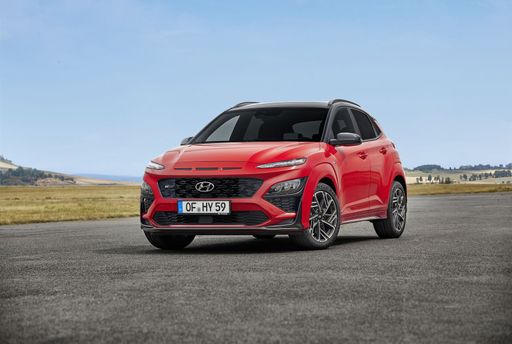 @ Hyundai Motor Company
@ Hyundai Motor Company
Hyundai Kona
Hyundai Kona
The Hyundai Kona wears its personality on the outside with bold styling and sprightly handling that turns city driving into something a little more fun than a commute. It blends practical space, modern tech and sensible running costs into a compact, stylish package — a smart pick if you want flair without paying luxury prices.
details @ Hyundai Motor Company
@ Hyundai Motor Company
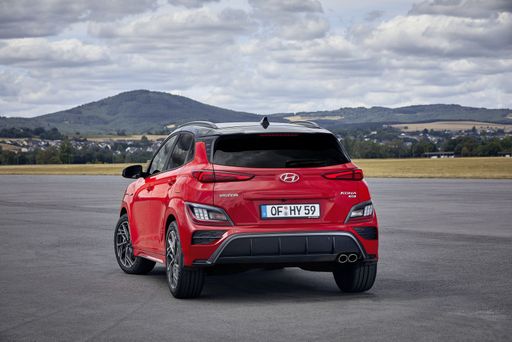 @ Hyundai Motor Company
@ Hyundai Motor Company
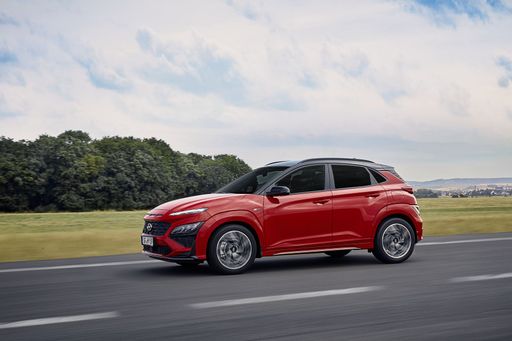 @ Hyundai Motor Company
@ Hyundai Motor Company
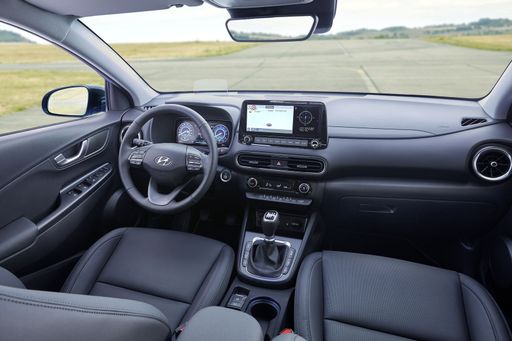 @ Hyundai Motor Company
@ Hyundai Motor Company
Skoda Kamiq
The Skoda Kamiq is a neatly packaged city crossover that pairs practical space with unshowy, thoughtful design. It’s easy to live with, economical to run and full of clever details that make daily driving feel intelligently sorted rather than flashy.
details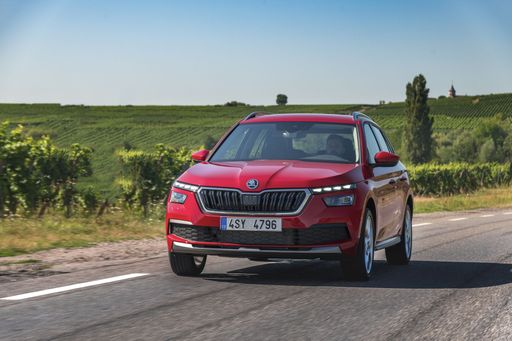 @ Škoda Auto a.s. / Škoda Storyboard
@ Škoda Auto a.s. / Škoda Storyboard
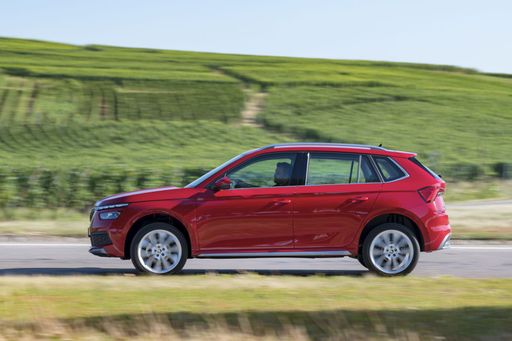 @ Škoda Auto a.s. / Škoda Storyboard
@ Škoda Auto a.s. / Škoda Storyboard
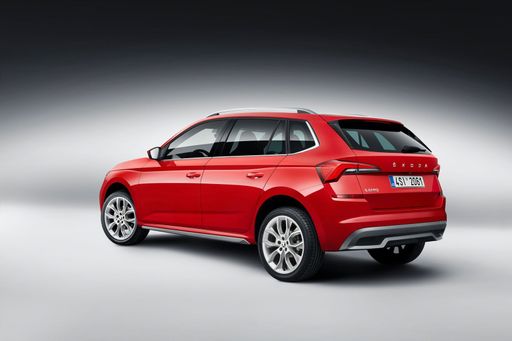 @ Škoda Auto a.s. / Škoda Storyboard
@ Škoda Auto a.s. / Škoda Storyboard
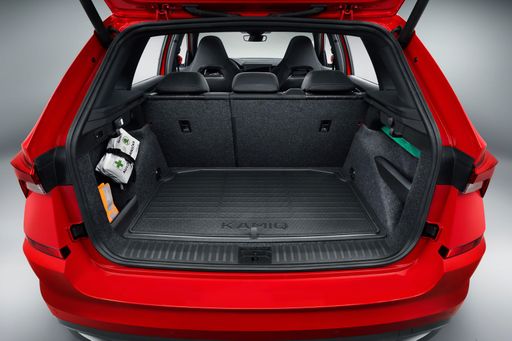 @ Škoda Auto a.s. / Škoda Storyboard
@ Škoda Auto a.s. / Škoda Storyboard
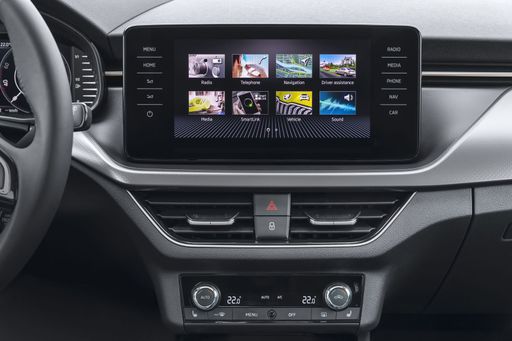 @ Škoda Auto a.s. / Škoda Storyboard
@ Škoda Auto a.s. / Škoda Storyboard
 @ Hyundai Motor Company
@ Hyundai Motor Company
|
 @ Škoda Auto a.s. / Škoda Storyboard
@ Škoda Auto a.s. / Škoda Storyboard
|
|
|
|
Costs and Consumption |
|
|---|---|
|
Price
23100 - 41600 £
|
Price
21700 - 31900 £
|
|
Consumption L/100km
4.6 - 7 L
|
Consumption L/100km
5.3 - 5.7 L
|
|
Consumption kWh/100km
14.6 - 16.8 kWh
|
Consumption kWh/100km
-
|
|
Electric Range
377 - 514 km
|
Electric Range
-
|
|
Battery Capacity
1.3 - 65.4 kWh
|
Battery Capacity
-
|
|
co2
0 - 163 g/km
|
co2
121 - 128 g/km
|
|
Fuel tank capacity
38 - 47 L
|
Fuel tank capacity
50 L
|
Dimensions and Body |
|
|---|---|
|
Body Type
SUV
|
Body Type
SUV
|
|
Seats
5
|
Seats
5
|
|
Doors
5
|
Doors
5
|
|
Curb weight
1370 - 1773 kg
|
Curb weight
1231 - 1340 kg
|
|
Trunk capacity
466 L
|
Trunk capacity
400 L
|
|
Length
4350 - 4385 mm
|
Length
4241 mm
|
|
Width
1825 mm
|
Width
1793 mm
|
|
Height
1580 - 1585 mm
|
Height
1562 mm
|
|
Max trunk capacity
1300 L
|
Max trunk capacity
1395 L
|
|
Payload
420 - 490 kg
|
Payload
439 - 539 kg
|
Engine and Performance |
|
|---|---|
|
Engine Type
Electric, Petrol, Full Hybrid
|
Engine Type
Petrol
|
|
Transmission
Automatic, Manuel
|
Transmission
Manuel, Automatic
|
|
Transmission Detail
Reduction Gearbox, Manual Gearbox, Dual-Clutch Automatic
|
Transmission Detail
Manual Gearbox, Dual-Clutch Automatic
|
|
Drive Type
Front-Wheel Drive, All-Wheel Drive
|
Drive Type
Front-Wheel Drive
|
|
Power HP
115 - 218 HP
|
Power HP
95 - 150 HP
|
|
Acceleration 0-100km/h
7.8 - 11.9 s
|
Acceleration 0-100km/h
8.1 - 11 s
|
|
Max Speed
162 - 210 km/h
|
Max Speed
183 - 216 km/h
|
|
Torque
200 - 265 Nm
|
Torque
175 - 250 Nm
|
|
Number of Cylinders
3 - 4
|
Number of Cylinders
3 - 4
|
|
Power kW
85 - 160 kW
|
Power kW
70 - 110 kW
|
|
Engine capacity
998 - 1598 cm3
|
Engine capacity
999 - 1498 cm3
|
General |
|
|---|---|
|
Model Year
2024 - 2025
|
Model Year
2025
|
|
CO2 Efficiency Class
A, D, C, E, F
|
CO2 Efficiency Class
D
|
|
Brand
Hyundai
|
Brand
Skoda
|
Is the Hyundai Kona offered with different drivetrains?
Available configurations include Front-Wheel Drive or All-Wheel Drive.
The prices and data displayed are estimates based on German list prices and may vary by country. This information is not legally binding.
